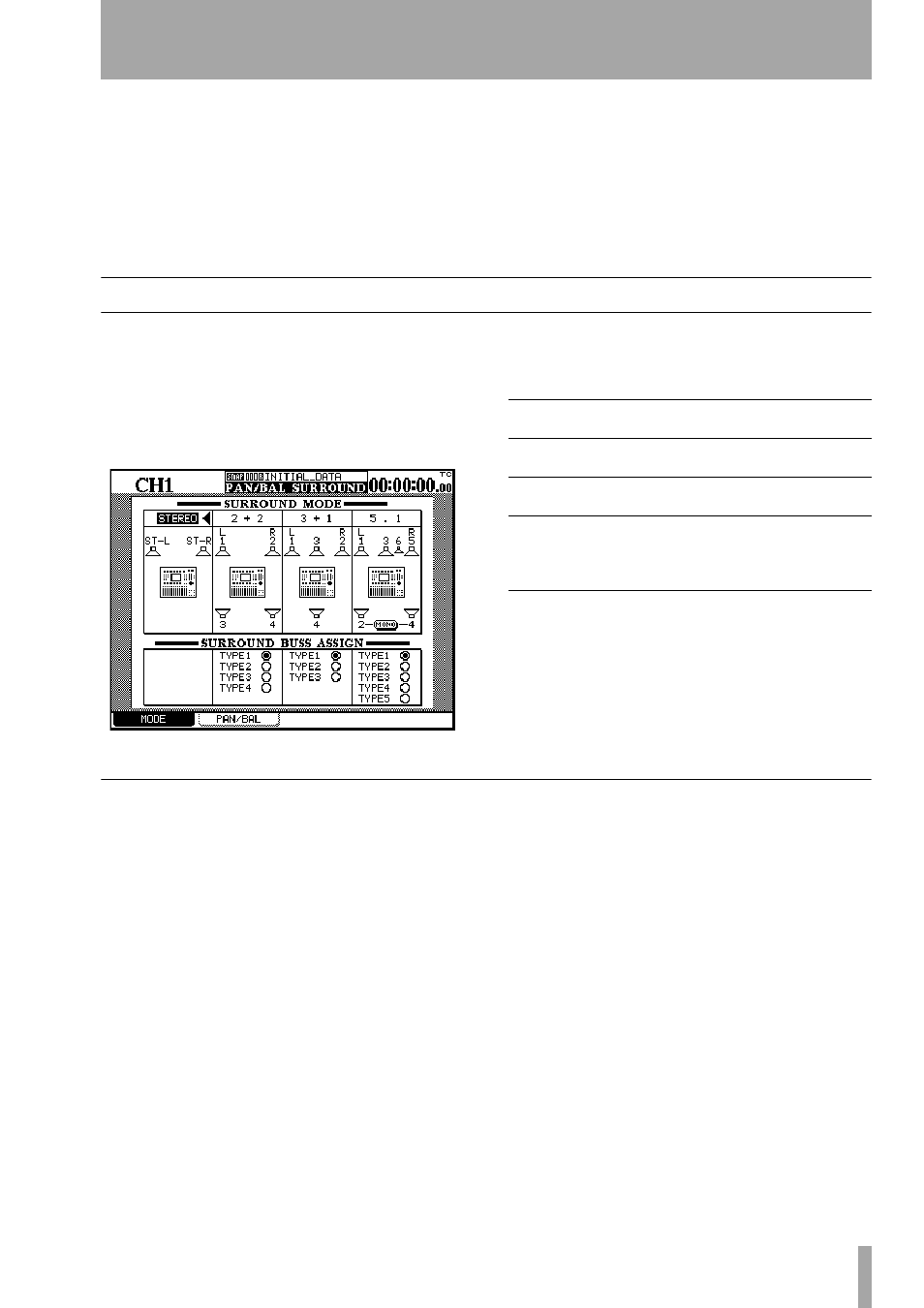14 – surround operations, Selecting a surround mode, Monitoring surround patterns – Teac DM-24 User Manual
Page 107

TASCAM DM-24 Reference Manual
107
14 – Surround operations
In addition to normal stereo operations, the DM-24 is
also capable of producing surround mixes in a variety
of formats.
Because the DM-24 is capable of mixing to several
different surround modes, some of the operations and
display screens are slightly different from the “nor-
mal”, stereo mode, as explained here.
Some of these operations are also explained in other
parts of the manual, but are gathered here for easy
reference.
In all cases where a surround mode is selected, the
output busses are used to control the levels of the sig-
nals sent to the different channels of the surround
matrix.
Selecting a surround mode
This selection is made through the
PAN/BAL
SURROUND MODE
screen:
1
Make sure the
SHIFT
indicator is off, and
press the
PAN/BAL SURROUND
key until the
following screen is shown (or press soft key
1):
2
Use the cursor keys and the
ENTER
key to
highlight and select the stereo mode or a sur-
round mode from the following:
A popup screen appears, allowing you to con-
firm the new setting, or cancel it.
A plan view of the speaker layout is shown on
the display screen.
Note that in the 5.1 screen, the two rear
speakers can be selected as a single mono
output.
Monitoring surround patterns
The output busses are used to control the levels of
signals sent to the surround matrix channels. In this
context, they can be regarded as master “surround
pan” controls.
For monitoring, therefore, it is necessary to have an
analog output for each output buss used. This is most
easily achieved using the analog I/O slot card (IF-
AN/DM). This allows easy connection of an analog
multi-channel monitoring system to the DM-24.
The assignment of the busses to the channels is
shown by a number beside the representation of the
on-screen speakers.
STEREO
One left and one right speaker, output through the
stereo output buss
2 + 2
One front left speaker and one front right speaker,
with a pair of rear speakers (left and right)
3 + 1
A pair of front left and right speakers, together with a
front center speaker and a center rear speaker
5 . 1
A pair of front left and front right speakers, with a front
center speaker. A pair of rear left and rear right speak-
ers is also provided, as is a sub channel (typically
placed front center)
